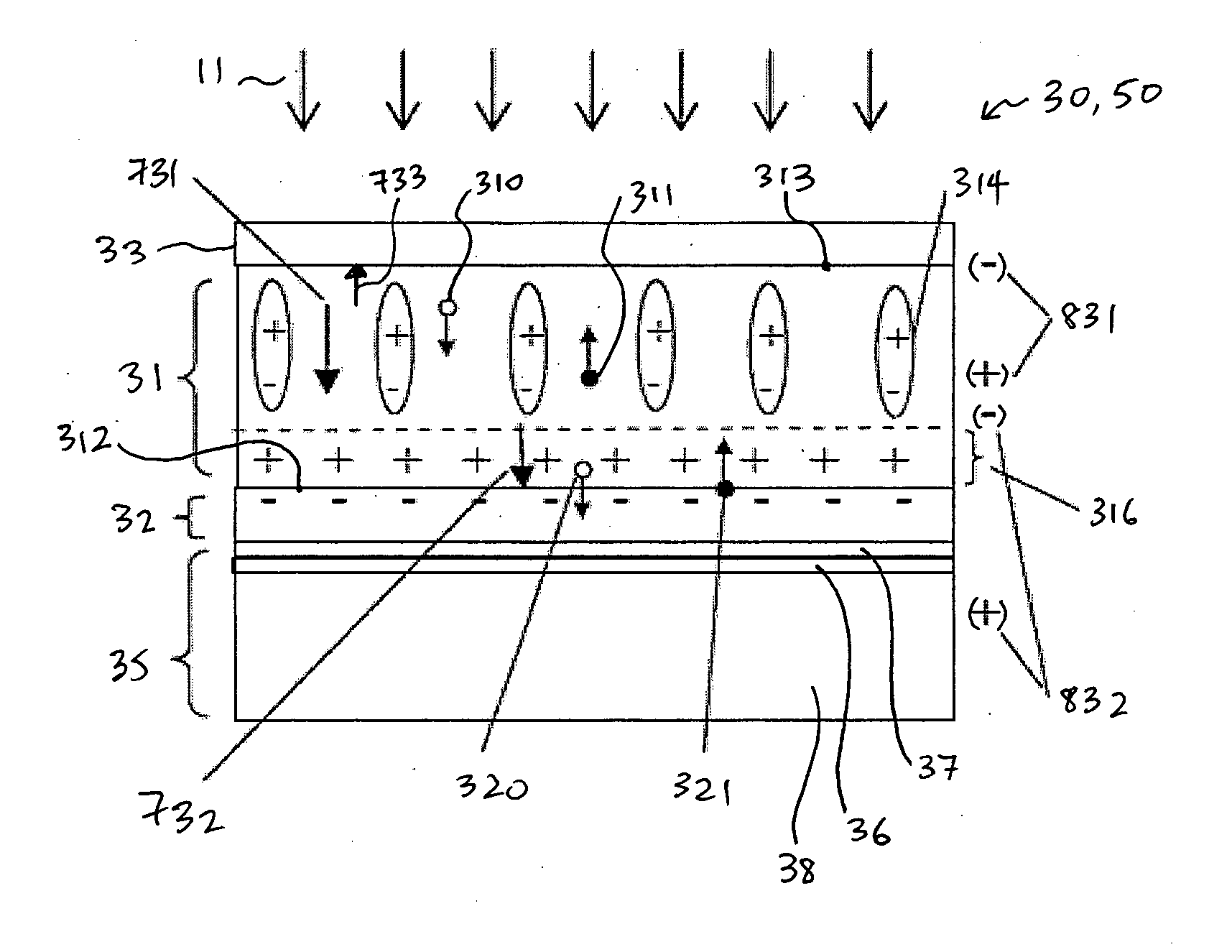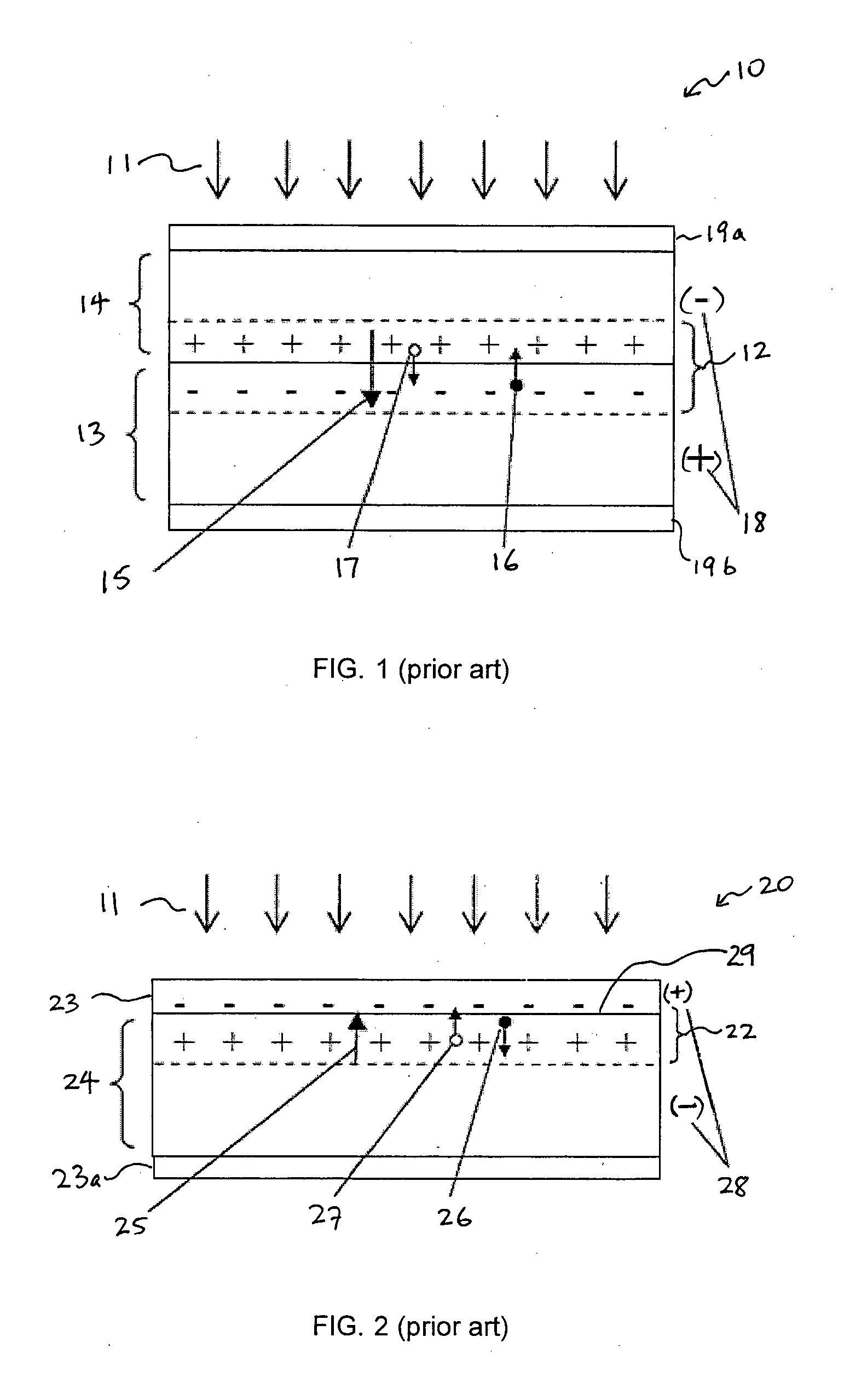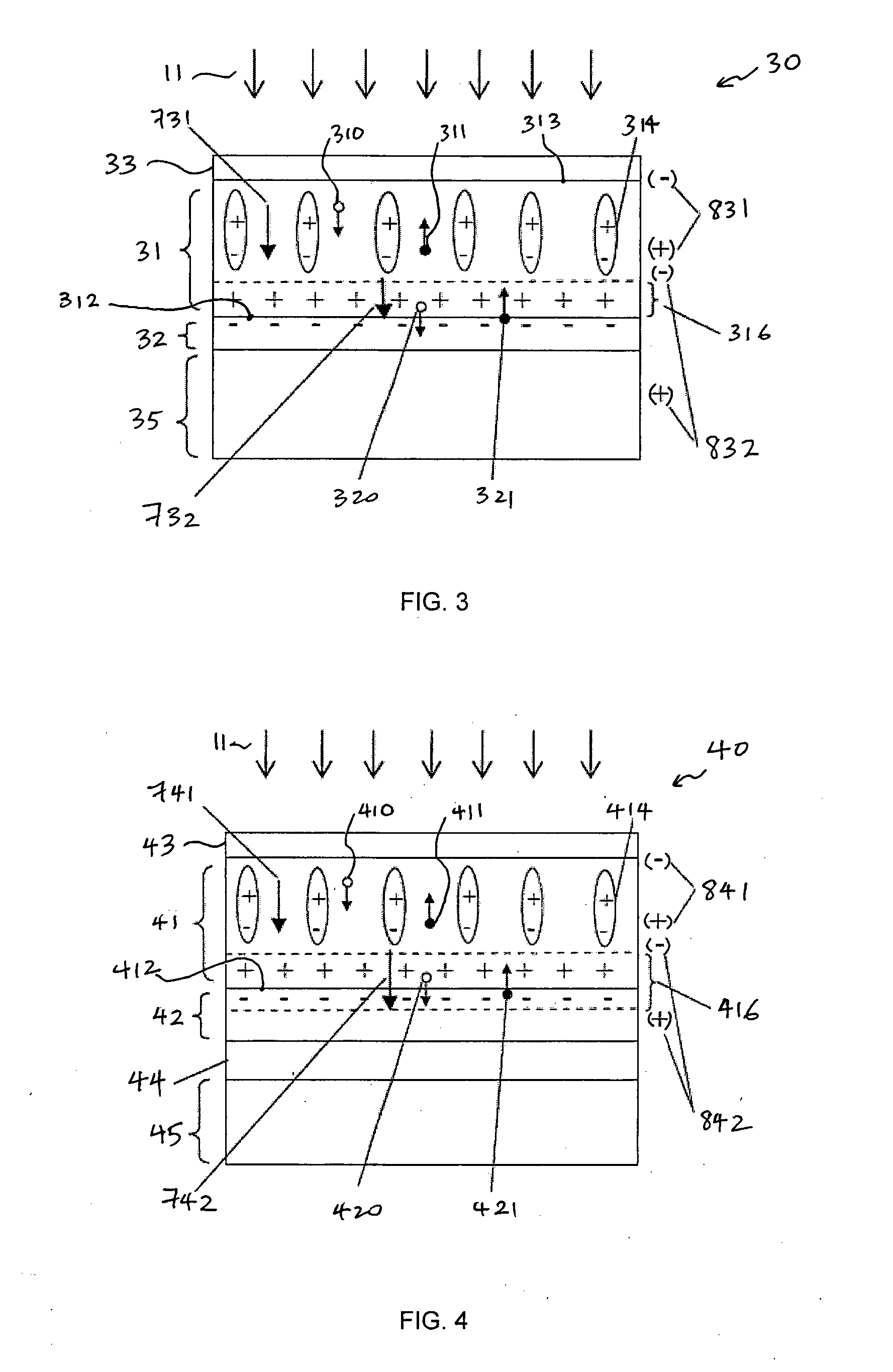Photovoltaic UV detector
a technology of photovoltaic uv and detector, applied in the field of photovoltaic uv detector, can solve the problems of skin cancer, cataracts, solar retinitis and corneal dystrophies, and the performance of silicon uv detectors under strong uv irradiation often deteriorates
- Summary
- Abstract
- Description
- Claims
- Application Information
AI Technical Summary
Benefits of technology
Problems solved by technology
Method used
Image
Examples
Embodiment Construction
[0055]Preferred embodiments of a photovoltaic UV detector according to the present invention will now be described with reference to FIGS. 3 to 9.
[0056]FIG. 3 shows a photovoltaic UV detector 30 with electrical output generated under UV irradiation 11 according to a first exemplary embodiment. The photovoltaic UV detector 30 has a multilayer structure. A first layer 31 comprises an electrically polarized dielectric thin layer configured to generate a first electrical output 831 under the UV irradiation 11. A dielectric material is an electrically insulating material with a large electric impedance. Preferably, the electrically polarized dielectric thin layer 31 is a ferroelectric thin film 31 with an oxide composition which is stable in air under UV irradiation. Thus, a first electric field 731 already exists or is comprised in a bulk region of the ferroelectric thin layer 31. Electrons rather than holes are the majority charge carriers in the ferroelectric thin layer 31, and so the...
PUM
 Login to View More
Login to View More Abstract
Description
Claims
Application Information
 Login to View More
Login to View More - R&D
- Intellectual Property
- Life Sciences
- Materials
- Tech Scout
- Unparalleled Data Quality
- Higher Quality Content
- 60% Fewer Hallucinations
Browse by: Latest US Patents, China's latest patents, Technical Efficacy Thesaurus, Application Domain, Technology Topic, Popular Technical Reports.
© 2025 PatSnap. All rights reserved.Legal|Privacy policy|Modern Slavery Act Transparency Statement|Sitemap|About US| Contact US: help@patsnap.com



